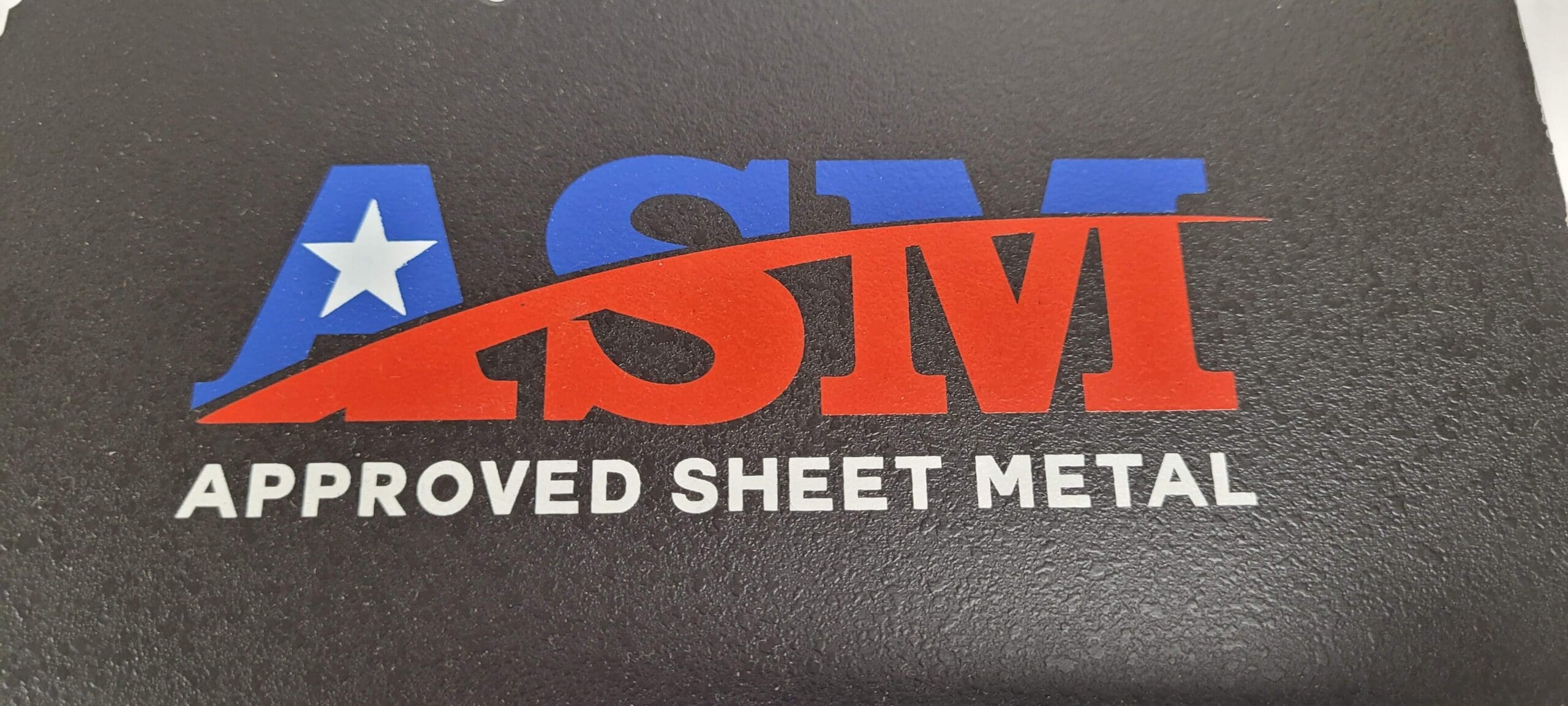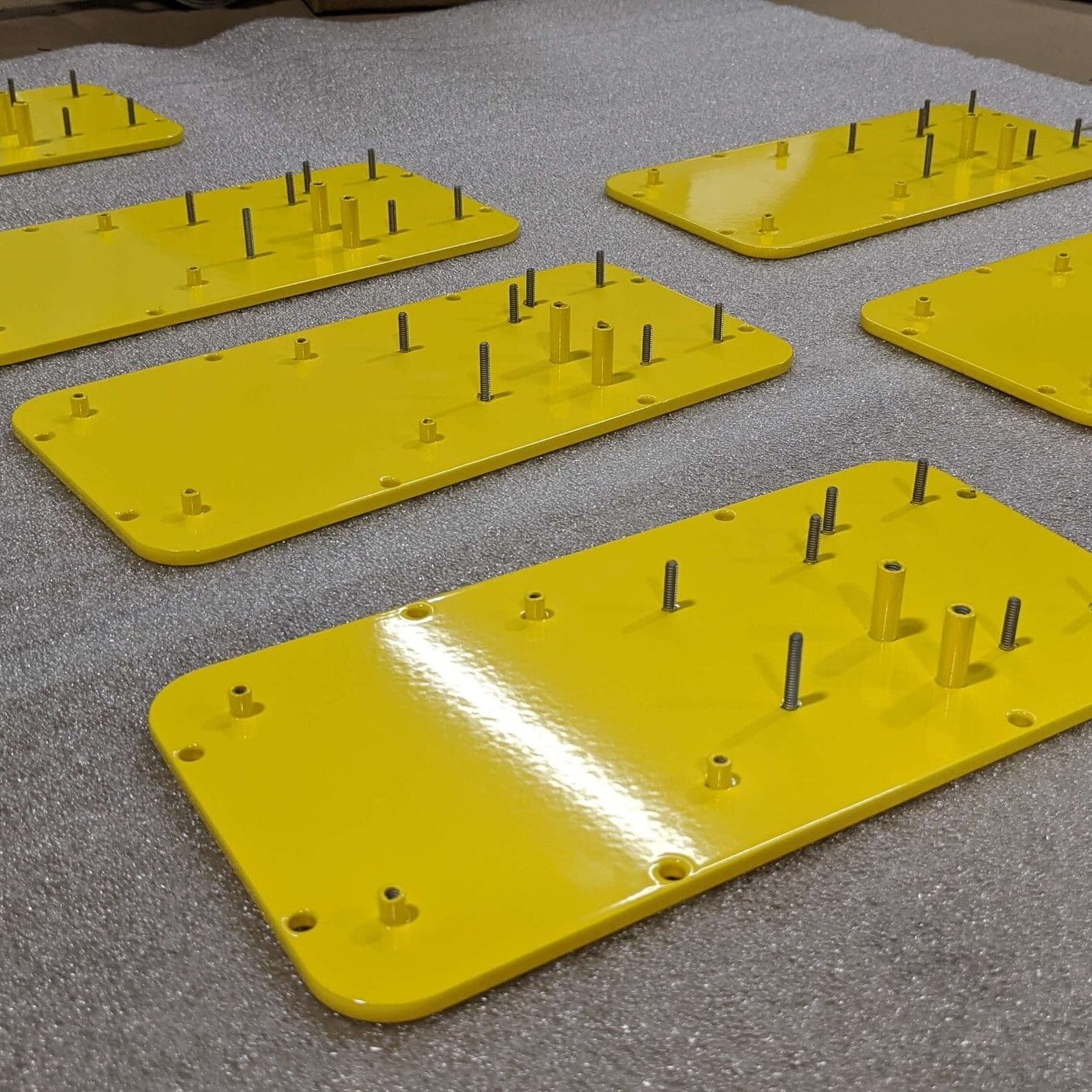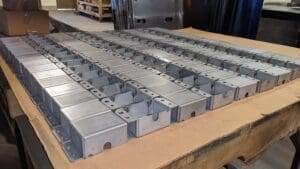Last updated on January 20th, 2025 at 10:18 am
If you’re looking to enhance an enclosure, panel, or part, take advantage of Approved Sheet Metal’s silk-screening services. With our in-house capabilities, we can make your prototype from start to finish, owning the entire process to guarantee high quality and a quick turnaround.
Table of Contents
- 1 What Is Silk-Screening?
- 2 Benefits of Silk-Screening for Sheet Metal
- 3 Common Applications of Silk-Screening on Sheet Metal
- 4 Design Considerations for Silk-Screening
- 5 Approved Sheet Metal’s Silk-Screening Process
- 6 6 Tips for Designing Powder Coated Sheet Metal Parts
- 7 Get Your Part Silk-Screened at Approved Sheet Metal
- 8 Sheet Metal Silk Screening FAQ
- 8.0.1 What is silk-screening?
- 8.0.2 How does Approved Sheet Metal's silk-screening process work?
- 8.0.3 What are the advantages of silk-screening over engraving or painting?
- 8.0.4 Can Approved Sheet Metal silk-screen multi-colored designs?
- 8.0.5 How can I get my part silk-screened by Approved Sheet Metal?
What Is Silk-Screening? 
Also known as screen-printing, silk-screening is a stenciling method that uses a porous mesh screen to press ink onto a material. Traditionally, the screen fabric was made of silk—hence the name silk-screening. Silk-screening dates back to the Neolithic period, when ancient Greeks used this stenciling method to embellish buildings, artwork, and tombs.
Today, mesh screens are made from artificial materials like polyester, nylon, or even steel. Silk-screening remains an easy, cost-effective way to add custom designs to materials like glass, wood, fabric—and yes, even sheet metal!
Benefits of Silk-Screening for Sheet Metal
Silk-screening offers several advantages that make it an ideal choice for enhancing sheet metal parts:
- Durability: The inks used in silk-screening are designed to adhere strongly to sheet metal surfaces, ensuring designs withstand wear, tear, and environmental conditions.
- Cost-Effectiveness: Compared to engraving or painting, silk-screening is a more affordable option for both small and large production runs, especially for intricate designs.
- Customizability: Silk-screening allows for the application of detailed graphics, logos, and text in a wide range of colors, offering flexibility for unique branding and design needs.
- Scalability: Once a screen is created, it can be reused for future batches, making silk-screening highly efficient for repeat orders.
Common Applications of Silk-Screening on Sheet Metal
Silk-screening is a versatile method used across industries to enhance the functionality and appearance of sheet metal parts. Here are some of its most common applications:
- Industrial Equipment: Adding safety instructions, operational labels, and warnings to machine panels and components.
- Electronics Enclosures: Printing logos, technical details, or specifications on housings for electronic devices.
- Aerospace and Defense: Marking parts with serial numbers, certifications, or other regulatory information.
- Signage: Creating custom metal signs for businesses, public spaces, and architectural projects.
- Consumer Products: Decorating and branding metal furniture, appliances, or decorative panels for a sleek and professional finish.
Design Considerations for Silk-Screening
To ensure a flawless silk-screened design, consider the following tips during the design phase:
- Artwork Preparation: Provide high-resolution files, such as .JPEG, .EPS, or CAD formats, and avoid fine lines or intricate patterns that might not translate well to a screen.
- Color Selection: Choose colors that provide sufficient contrast with the metal surface for maximum visibility and impact. Keep in mind that metallic surfaces can affect how colors appear.
- Placement and Orientation: Position designs to avoid areas affected by bends, folds, or mounting holes to maintain design integrity.
Approved Sheet Metal’s Silk-Screening Process
Silk-screening is simple at our sheet metal shop in NH. We ask our customers to submit artwork via .JPEG, .EPS, or CAD files. We take over from there. Here’s how our silk-screening process works:
Step 1: Burn the negative. Just like in old-fashioned photography, we burn the design onto a negative and transfer it to a larger acetate screen.
Step 2: Make the mesh screen. We lay the acetate screen on top of an emulsion-coated mesh screen. When exposed to bright light, the acetate burns an imprint of the design onto the mesh.
Step 3: Layer it on! Finally, we set the mesh screen onto our press and layer ink onto the part. Voila! Most customers choose black and white, but we can also silk-screen multi-colored designs.
Get Your Part Silk-Screened at Approved Sheet Metal
Silk-screening is a quick and cost-effective alternative to engraving or painting. With no size or color restrictions, it’s perfect for large-batch applications like company logos, nameplates, part labels, and safety instructions. It’s durable, it won’t wash out, and once we’ve created a screen for you, we can store it to use again for repeat orders.
Do you need a design printed on your part? If you can dream it, Approved Sheet Metal can make it happen. Request a quote from us today!





